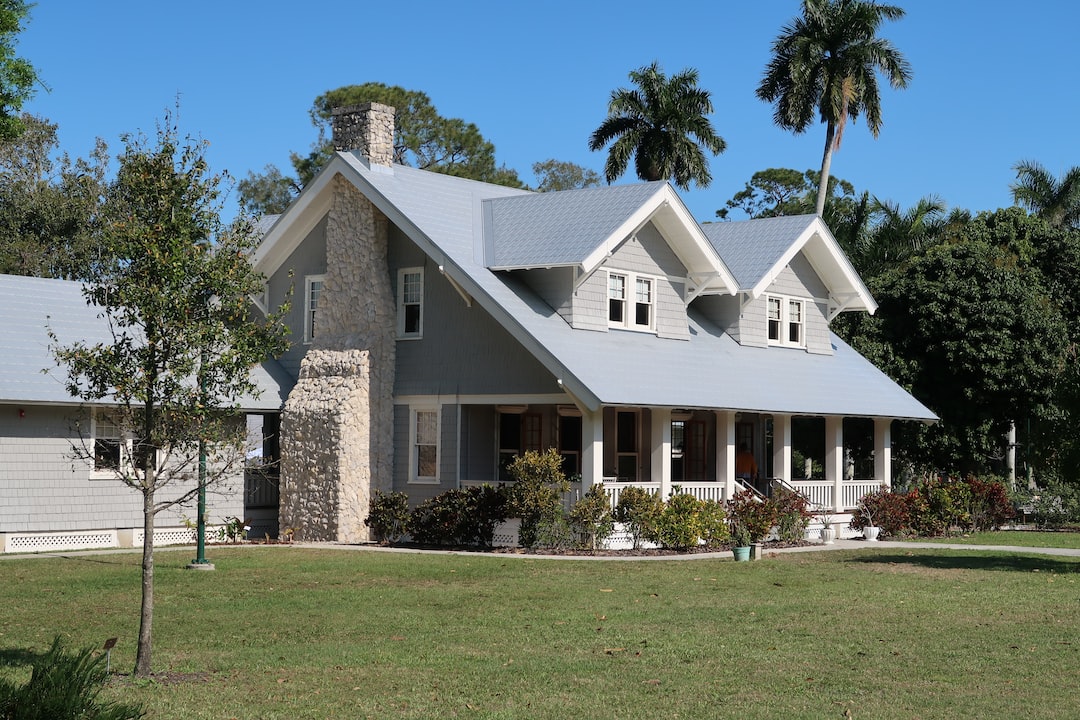
Top 10 Affordable House Painters in 2023
Top 10 Affordable House Painters in 2023
Finding an affordable and reliable house painter can be quite a task, given the plethora of options available. To make your search easier, here’s a list of the top 10 affordable house painters of 2023 that have received rave reviews for their excellent service and competitive pricing.
- Five Star Painting: Renowned for their professionalism and quality of work, Five Star Painting offers interior and exterior painting services across numerous locations. They provide a detailed, personalized, and transparent quote, ensuring you get the most value for your money.
- WOW 1 DAY PAINTING: This company stands out for its efficient and high-quality service, promising to complete your paint job in just one day. With customer satisfaction as their priority, they provide affordable painting services without compromising on quality.
- CertaPro Painters: Known for their commitment to quality work and professional service, CertaPro offers both residential and commercial painting services. They provide personalized quotes and a range of options to suit different budgets.
- College Pro Painters: Offering painting services since 1971, College Pro Painters employs students and gives them real-world entrepreneurial experience. They offer quality workmanship at a budget-friendly price.
- Paintzen: If you’re looking for convenience, Paintzen offers online quotes and booking, with the promise of a professional paint job executed by insured and experienced painters. They offer competitive prices and a 100% satisfaction guarantee.
- 360° Painting: With a commitment to quality and detail, 360° Painting offers comprehensive residential and commercial painting services. Their competitive pricing and commitment to customer satisfaction have earned them a spot on this list.
- A-1 Painting Concepts: This company offers an array of services from exterior and interior painting to pressure washing and drywall repair. Known for their affordable rates and high-quality work, A-1 Painting Concepts is a solid choice for your painting needs.
- Fresh Coat Painters: Providing services across the US, Fresh Coat Painters are recognized for their professionalism, punctuality, and affordable pricing. They provide detailed quotes to ensure transparency in pricing.
- ProTect Painters: Providing interior and exterior painting services, ProTect Painters is known for their professionalism and high-quality service. They offer competitive pricing and ensure customer satisfaction.
- Precision Painting Plus: Known for their precision and commitment to quality, Precision Painting Plus offers affordable and comprehensive painting services. They also offer a price guarantee, ensuring you get the best deal.

These painters have been selected based on their affordability, customer reviews, and commitment to quality. It’s essential to get quotes from multiple painters, discuss your specific needs, and read reviews before making a final decision.
Key Features to Look For When Choosing a Professional Painter
Selecting a professional painter for your home involves more than just finding someone who can apply paint. There are several key features and attributes you should consider to ensure a successful painting project. Here’s what to look for:
Experience and Expertise
Professional painters should have substantial experience in their field, indicating a proven track record of quality work. Their expertise should extend beyond mere paint application; they should be knowledgeable about surface preparation, understanding different types of paint, and proper application techniques.
Licensing and Insurance
Ensure that any painter you hire is properly licensed and insured. This protects you in the event of any accidents or damages that occur during the job.
Reputation and Reviews
Look for a painter with positive customer reviews and a solid reputation. Online review platforms, such as Google or Yelp, can provide valuable insight into past customers’ experiences.
Detailed Estimates
A professional painter should provide a detailed estimate that breaks down the costs for materials, labor, and any other charges. This transparency helps avoid any surprise costs and allows you to compare different service providers effectively.
Good Communication
Your painter should communicate clearly and effectively, keeping you informed about the project’s progress, any issues encountered, and the expected completion time.

Quality Materials
The painter should use high-quality materials. The quality of the paint and other materials used will significantly impact the look and durability of the finished job.
Proper Preparation
Good painters know that thorough preparation is the key to a great finish. This includes tasks like sanding, filling holes, priming, and masking areas to protect them from paint drips.
Guarantee on Work
Many professional painters offer a guarantee on their work, providing additional assurance of the quality you can expect and offering to correct any issues that may arise after completion of the project.
When you pay attention to these key features, you’re more likely to find a professional painter who’ll provide high-quality work that enhances the beauty of your home and lasts for years to come. Remember, the cheapest estimate may not always be the best, so consider all these factors in addition to cost when making your decision.
Choosing the Most Affordable Type of Paint for Your Home
When deciding to give your home a fresh coat of paint, one critical aspect to consider is the type of paint you choose. Different paints come with varying price points, longevity, and finishes, so it’s essential to select the right kind for your specific needs. Here’s a look at some of the most affordable types of paint for both the interior and exterior of your home.
Interior Paints
For interior walls, one of the most cost-effective options is latex (or water-based) paint. Latex paints are popular for their ease of use, quick drying time, and excellent color retention. They also produce fewer odors compared to oil-based paints and can be cleaned with water, which can save you the cost of buying specialized cleaning solutions.
Another affordable option is enamel paint, particularly for areas that see high traffic or need to withstand regular cleaning, like kitchens or bathrooms. Enamel paints are known for their durability and smooth, hard finish that is resistant to moisture and mildew.

Exterior Paints
When it comes to painting the exterior of your home, acrylic latex paints are usually the most cost-effective choice. They are durable, resist cracking, retain their color well, and stand up to the elements. Plus, like their interior counterparts, they can be easily cleaned with water.
Oil-based paints are another option for exterior use. While typically more expensive and time-consuming to work with due to their longer drying times, oil-based paints provide a durable and attractive finish. They are especially effective at covering old paint and sealing stains, which could save you the cost of extensive surface preparation.
When choosing paint, it’s important to remember that the most affordable option might not always be the most cost-effective in the long run. Cheaper paints may require more coats or may not last as long, leading to more frequent repaints. Consider the longevity and coverage of the paint as well as its upfront cost. Ultimately, the best paint for your home will depend on a variety of factors, including the surface you’re painting, your climate, and your budget. It may be worth consulting with a professional painter to understand the best and most affordable options for your specific situation.
Breathe New Life into Your Living Room, Kitchen, and More
Choosing the best interior paint is a significant step in any home improvement project. The right paint can transform your space, injecting new life into your rooms. Whether you’re looking to refresh your living room walls or give your kitchen cabinets a new look, understanding the different types of paints available can guide you to make the best and most affordable choice.
Living Room
For living rooms, you might consider using satin or eggshell finish paint. These paints have a slight sheen, which adds a rich, warm quality to the room. They’re also easy to clean, making them ideal for high-traffic areas. Acrylic latex-based paints in these finishes are typically affordable and offer a broad range of color options.
Kitchen Cabinets
When it comes to kitchen cabinets, you want paint that’s tough enough to withstand daily use. Enamel-based paints, either oil or water-based, are an excellent choice for this. They dry to a hard, durable finish that stands up well to frequent cleaning. While they may be slightly more expensive than other options, the long-term durability they offer can save you money in the long run.

Other Home Improvement Projects
For other home improvement projects, such as painting doors or trim, semi-gloss or gloss paints are usually the best choice. These paints are highly resistant to wear and tear, easy to clean, and give a sophisticated finish. Like enamel paints, they may cost a bit more, but their durability makes them a cost-effective choice.
Remember, while the cost is a crucial factor, it shouldn’t be the only consideration when choosing paint for your home. You should also consider the durability of the paint, the room’s function, and how much wear and tear the surface will endure. Investing a bit more in high-quality paint can save you money in the long run by extending the time between repaints. It’s all about finding the right balance between cost, quality, and your specific needs.
Understanding Paint Finishes: Choosing the Right One for Your Space
One of the key decisions when choosing paint is selecting the right finish. The finish refers to the sheen level or glossiness of the paint after it dries. Different finishes have unique qualities that make them better suited to certain spaces or applications. Here is a breakdown of the most common types of paint finishes:
- Matte or Flat: This finish has the least amount of shine and provides a non-reflective surface. It’s ideal for hiding imperfections on your walls as it absorbs, rather than reflects, light. Best suited for low-traffic areas like living rooms and bedrooms where touch-ups are less likely.
- Eggshell: Offering a soft, velvety finish with a slight hint of shine, eggshell finish is easy to clean and resists some dirt and stains. It’s great for moderate-traffic areas like dining rooms.
- Satin: This finish provides a smooth, pearl-like appearance that’s easier to clean than eggshell or flat finish. Satin finish is perfect for high-traffic areas such as family rooms, kids’ bedrooms, hallways, and foyers.
- Semi-Gloss: More reflective than satin, semi-gloss is durable, washable, and resists moisture well. It’s commonly used on kitchen cabinets, doors, windows, and trim. It’s also a good choice for bathrooms due to its moisture resistance.
- Gloss: The shiniest finish, gloss paint is highly durable and easy to clean. It’s best used on doors, trim, and furniture rather than walls, as it tends to highlight imperfections.
Understanding paint finishes can help you make an informed decision when choosing paint for your home. The right finish can enhance the durability of your paint job, match the function of the space, and create the aesthetic you desire. Always consider the area’s traffic level, the condition of the walls, and the desired look when deciding on the finish.

Preparing Your Home for Painting: The Crucial First Steps
A successful painting project relies heavily on the preparation that precedes the actual application of paint. Thoroughly preparing surfaces, whether they are drywall, wood, or metal, will result in a smoother finish and a paint job that lasts longer. Let’s delve into the necessary steps involved in preparing your home for painting:
Cleaning
Before you even open a can of paint, your first task is cleaning. Dirt, dust, and grease spots can ruin a paint job by preventing the paint from adhering correctly. Clean your walls with warm water and a mild detergent. For kitchen walls, consider a solution that’s designed to cut through grease. Rinse the walls thoroughly and give them plenty of time to dry before moving on to the next step.
Sanding
Sanding is a critical step, especially for surfaces like wood or previously painted walls. Sanding smoothens the surface and ensures better paint adhesion. Use sandpaper or a sanding block to gently buff away any rough spots or old paint. After sanding, wipe down the surfaces with a damp cloth to remove any dust.
Repairing
Check the surfaces for any cracks, holes, or dents. These need to be filled and smoothed before painting to achieve a flawless finish. Use a spackling compound for minor repairs on drywall and wood filler for wooden surfaces. Once the filler has dried, sand it smooth.
Priming
Priming is especially crucial if you’re painting over a darker color, painting a lighter color, or painting over new drywall or bare wood. A primer seals the original material and provides a surface to which the paint can adhere. It can also prevent stains and knots from showing through the final coat of paint.
Masking
Finally, protect the areas you don’t want to be painted by using painter’s tape along edges and trim. Also, cover the furniture and floor with drop cloths to protect them from paint drips and splatters.
A well-prepared surface can make the difference between a professional-looking paint job and one that appears sloppy or unfinished. By investing time in cleaning, sanding, repairing, priming, and masking, you’re laying the foundation for a successful painting project that will look fantastic and stand the test of time.

The Impact of Color Choices: Setting the Mood with Paint
Choosing the right paint color is about more than just aesthetics; colors can significantly impact a room’s mood and the overall feel of your home. The psychology of color suggests that different colors can evoke specific emotions and behaviors. Here’s a look at how various colors can affect the atmosphere of a space:
Warm Colors
Warm colors such as red, orange, and yellow are lively, vibrant, and uplifting. These colors can stimulate conversation and appetite, making them excellent choices for dining rooms and kitchens. Be cautious, though, as these colors can also be intense and may be overwhelming if overused.
Cool Colors
Cool colors like blue, green, and violet tend to be calming and relaxing. They are ideal for creating a peaceful atmosphere in bedrooms and bathrooms. Light blues and greens are particularly suited for creating a tranquil and serene environment.
Neutrals
Neutral colors, including shades of white, gray, and beige, offer flexibility and versatility. They can make a room feel clean, sophisticated, and spacious. Neutrals are great for any room and provide an excellent backdrop for showcasing artwork or other focal points.
Dark Colors
Dark colors like deep blue, green, or gray can create a dramatic and cozy atmosphere. They’re well-suited for larger rooms or rooms with plenty of light. When used in small rooms, they can make the space feel more intimate and cozy.
When choosing colors, consider the function of the room, the amount of natural light it receives, and the mood you want to create. Testing the colors with swatches or samples before committing is always a good idea, as colors can look different under varying lighting conditions. Remember, choosing a color scheme for your home is a personal decision. While these guidelines can help, the most important thing is that your home’s colors reflect your taste and make you feel good. After all, your home should be a place where you feel comfortable and at ease.

The Connection Between Paint and Light: Ensuring Your Colors Shine in Any Light
The relationship between paint and light is an important factor when selecting paint colors for your home. Light can significantly alter the way a color appears. Both natural and artificial light can influence the final look of your paint color, so understanding their effects can help you make the best color choice.
- Natural Light: Sunlight is the purest, whitest light and gives the most accurate representation of color. However, the quality of sunlight can vary throughout the day, affecting your color’s appearance. For instance, morning light tends to be cooler, casting a bluish tone, while afternoon light is warmer and redder. Rooms with plenty of sunlight can handle darker or vibrant colors, while rooms with less natural light might benefit from lighter or warmer colors.
- Incandescent Light: This type of lighting casts a warm, yellowish glow. It can intensify warm colors like red, orange, and yellow but can also mute cooler colors like blues and greens.
- Fluorescent Light: Fluorescent lighting gives a cool, blue tone, enhancing blues and greens but can wash out warm colors.
- LED Light: LED lights can range from warm to cool, depending on the Kelvin rating of the bulb. Warm LEDs (2000K-3000K) can bring out warm colors, while cool LEDs (4000K-5500K) enhance cool colors.
When choosing a paint color, consider the type of lighting in the room. Test your color choices in different lights to see how the color changes throughout the day and with your lights. By considering how light affects your chosen paint colors, you can ensure you’ll be happy with the colors in all lighting conditions.
The Impact of Painting on Home Value: A Worthwhile Investment
When it comes to home improvement projects, painting your home, both inside and out, ranks high on the list for boosting your home’s value. In fact, a fresh coat of paint is one of the most cost-effective ways to increase your home’s appeal and, in turn, its market value. Here’s how:
Curb Appeal
The exterior paint job is the first thing potential buyers see when they approach your home. A fresh, well-done paint job can significantly enhance your home’s curb appeal, creating a positive first impression that can translate into a higher perceived value.
Interior Appeal
Inside, fresh paint can make spaces feel clean, updated, and inviting. Neutral colors are typically most appealing to potential buyers, as they provide a blank canvas that allows buyers to envision their own decor and personal touches.

Addressing Wear and Tear
Painting can also help cover up everyday wear and tear, making the home look well-maintained. This can give potential buyers confidence that the home has been taken care of, which can translate to a higher selling price.
Affordability
Compared to other home improvement projects, painting is relatively affordable and can offer a high return on investment. This is especially true if you hire affordable painters who can deliver a high-quality job at a reasonable price. Professional painters have the expertise and equipment to deliver a seamless, durable finish that could be hard to achieve if you were to do it yourself.
The key to reaping the benefits of painting your home lies in the quality of the job. So, whether you’re painting to improve your living space or preparing to sell your home, investing in a professional, affordable painting service can certainly be a worthwhile investment. It’s an efficient way to refresh your home’s look, boost its appeal, and potentially increase its market value.

The Cost of Hiring a House Painter: What to Expect
Investing in professional house painting services is a smart move, but you might be wondering, “How much is this going to cost?” The answer to that question can vary based on several factors, such as the size and complexity of the project, the type of paint you choose, and the rates of the painting service. However, to give you a ballpark idea, here’s a breakdown of some average costs:
- Per Square Foot: On average, professional painters charge between $1.50 and $3.50 per square foot of paintable surface area. This rate should cover labor, materials, and the painter’s overhead costs.
- Hourly Rates: If your painter charges by the hour, you can expect to pay between $20 and $50 per hour. Keep in mind, though, that professional painters can often get more done in an hour than a DIY enthusiast due to their experience and efficiency.
- Exterior Painting: For an exterior painting job, the average cost can range from $1,800 for smaller homes (1,000-1,500 square feet) to $4,500 for larger homes (2,500-3,500 square feet).
- Interior Painting: Interior painting costs can also vary, with the national average ranging from $1,200 for a smaller home to $4,000 for larger homes.
- Individual Rooms: If you’re painting a single room, the cost will depend on the room’s size. For example, painting a smaller room like a bathroom could cost around $200, while a larger room like a living room could cost around $400-$800.
Remember, these are just averages. The actual cost of your painting project could be lower or higher depending on various factors, including the complexity of the job, the condition of your walls, and your location. Always ask for detailed estimates from several painters to ensure you’re getting the best value for your money. And remember, while cost is an important factor, so is quality. It’s worth investing a little more to ensure you get a professional, durable finish that will look great for years to come.
